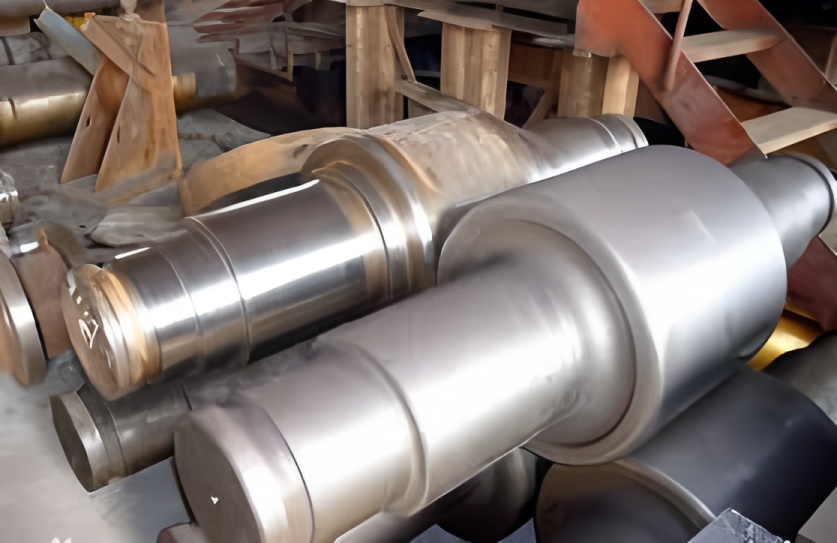Description: Roll surface defects such as chatter marks, roll marks, scoring, cracks, and spalling can adversely affect product surface quality. Investigating the causes and solutions for these defects is highly significant for production operations.
Keywords: cold rolling, cold rolled rolls, roll defects
Cold Rolling and Temperature Control in Steel Processing
What is Cold Rolling?
Cold rolling is an important metal processing technology in which metal sheet or strip is pressed at room temperature using a cold rolling mill. The process aims to reduce the thickness of heavy metal sheets or strips while enhancing material hardness, flexural strength, and corrosion resistance. Compared to other metal forming processes, cold rolling offers advantages such as low processing cost, a simple production process, high flatness and dimensional stability of products, good surface quality, and microstructural improvements that enhance metal performance. As a result, cold rolling is widely used in steel manufacturing, automotive production, electronics, aerospace, and architectural decoration.
In cold rolling, the condition of the rolls significantly affects strip production, surface quality, and cost per ton of steel. Defects in cold rolls can lead to quality degradation or even batch scrap, reducing yield and potentially damaging related equipment. Therefore, cold rolling manufacturers place great emphasis on roll performance and are committed to effectively reducing roll consumption. This article briefly analyzes common roll defects in stainless steel cold rolling and proposes corresponding treatment measures.
Roll Defects and Treatment Methods in Cold Rolling
Chatter Marks
During strip rolling, light and dark stripes perpendicular to the strip movement often appear on the surface. These are referred to as chatter marks. Practice has shown that most chatter marks originate from the rolls and are transferred to the strip surface.
Causes of Roll Chatter Marks:
Chatter caused by grinding wheel spindle vibration, appearing as spiral patterns on the roll surface.
Chatter due to poor grinding wheel shape or dressing, also appearing as spiral grooves.
Chatter resulting from poor contact in the roll support (steady rest), distributed parallel to the roll generatrix.
Chatter caused by poor tailstock center condition, also parallel to the generatrix.
Chatter due to poor headstock rotation, parallel to the generatrix.
Chatter from resonance between grinding wheel headstock and main headstock vibration, parallel to the generatrix.
Remedy:
First, identify and eliminate the source of abnormal vibration. Then, select the grinding method based on the severity of the chatter. Severe chatter should be removed through coarse grinding, while minor chatter can be addressed with semi-coarse grinding.
Roll Marks
Manifestation and Causes:
Roll marks mainly appear as pinholes, dents, indentations, or holes on the roll surface. Irregularly distributed dents, often circular, typically retain the surface texture of the roll and are usually caused by debris entering the bite zone or contact between rolls.
Preventive measures include identifying debris sources, cleaning the mill frame, improving lubrication and cooling, enhancing pickling coil surface and edge quality, increasing work roll surface hardness and case depth, and optimizing hardness matching between work rolls and intermediate rolls.
Remedy:
Depending on severity, roll marks are removed by grinding or turning.
Scoring (Knife Marks)
Causes:
Mismatch between roll speed, grinding wheel speed, Z-axis traverse speed, and grinding wheel feed rate.
Sharp or defective grinding wheel edges.
Insufficient cuts in semi-finish grinding, leaving defects from rough grinding.
Excessive load in finish grinding.
Excessive roll crown.
Prevention and Remedies:
Optimize roll speed, Z-axis traverse speed, grinding wheel feed, and grinding wheel speed using the formula:
a=f(Vw,Vs,Ap,Ds,Dw,m)a=f(Vw,Vs,Ap,Ds,Dw,m)
where aa is grinding amount (mm), VwVw is workpiece peripheral speed (m/min), VsVs is grinding wheel speed (m/s), ApAp is depth of cut (mm), DsDs is grinding wheel diameter (mm), DwDw is workpiece diameter (mm), and mm is the number of active abrasive grains per unit circumference.Chamfer sharp grinding wheel edges; dress defective wheels until defects disappear.
Follow standard grinding procedures for different roll types. Ensure defects from previous grinding steps are fully removed before proceeding.
Control number of passes and load in finish grinding; use softer wheels or reduce grinding wheel crown.
Remedy:
Repeated grinding is generally used to eliminate scoring.
Cracks
Causes:
Cracks due to localized stress concentration during rolling or hot grinding.
Cracks caused by mill accidents such as strip breaks or cobbles.
Impact from uneven entry material thickness causing sudden high rolling force.
Fatigue cracks.
Remedy:
To prevent further damage, address cracks promptly. Carefully inspect during grinding; mark crack locations at the roll neck for reference. Use testing or flaw detection to verify removal. For deep cracks, use point grinding to assess depth.
Spalling (Material Loss)
Spalling refers to the separation of material from the roll body surface.
Causes of Surface Spalling:
Thermal shock from strip breakage, tail whipping, or overlapping strips, causing roll surface burns and stress concentration. If rolling stress exceeds the roll’s tensile strength, surface cracks may propagate and cause spalling.
High-cycle fatigue spalling and subsurface cracks, common in backup rolls, often occur without mill accidents. This “brittle” spalling starts below the surface and propagates due to repeated stress below the material’s strength limit.
Causes of Roll End Damage:
Abnormal thrust bearings.
Incorrect positioning or malfunction of roll changing equipment.
Impact damage from handling or other accidents.
Treatment:
For surface spalling, use coarse grinding + flaw detection until defects are removed. For roll end damage, minor cases are addressed by grinding; severe cases may require scrapping the roll.
Support Impression Marks
Causes:
These occur on small-diameter rolls requiring steady rest support during grinding, such as work rolls and intermediate rolls in 20-high mills. Causes include uneven support pads, burrs, impurities in pad material, or abrasive grains and debris between the pad and roll, scratching the surface during grinding.


